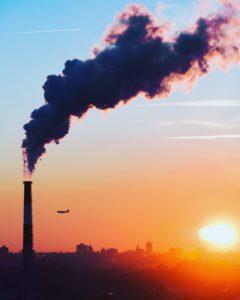Climate Justice Activists Address Environmental Racism
go.ncsu.edu/readext?689310
en Español / em Português
El inglés es el idioma de control de esta página. En la medida en que haya algún conflicto entre la traducción al inglés y la traducción, el inglés prevalece.
Al hacer clic en el enlace de traducción se activa un servicio de traducción gratuito para convertir la página al español. Al igual que con cualquier traducción por Internet, la conversión no es sensible al contexto y puede que no traduzca el texto en su significado original. NC State Extension no garantiza la exactitud del texto traducido. Por favor, tenga en cuenta que algunas aplicaciones y/o servicios pueden no funcionar como se espera cuando se traducen.
Português
Inglês é o idioma de controle desta página. Na medida que haja algum conflito entre o texto original em Inglês e a tradução, o Inglês prevalece.
Ao clicar no link de tradução, um serviço gratuito de tradução será ativado para converter a página para o Português. Como em qualquer tradução pela internet, a conversão não é sensivel ao contexto e pode não ocorrer a tradução para o significado orginal. O serviço de Extensão da Carolina do Norte (NC State Extension) não garante a exatidão do texto traduzido. Por favor, observe que algumas funções ou serviços podem não funcionar como esperado após a tradução.
English
English is the controlling language of this page. To the extent there is any conflict between the English text and the translation, English controls.
Clicking on the translation link activates a free translation service to convert the page to Spanish. As with any Internet translation, the conversion is not context-sensitive and may not translate the text to its original meaning. NC State Extension does not guarantee the accuracy of the translated text. Please note that some applications and/or services may not function as expected when translated.
Collapse ▲Environmental racism is the concept of discrimination in environmental policy that disproportionately affects ethnic minorities. This piece comes from two young authors discussing the ongoing challenge of environmental racism and how minority populations can often be exposed to higher levels of harmful pollutants.
Climate Justice Activists Address Environmental Racism
By Orlee Lauren and Bertha Posada
There are many well-documented cases of discrimination against minorities. However environmental racism is particularly harmful, as it has been poorly publicized and has broad damaging implications on entire communities. In many cases of environmental racism the government has turned a blind eye to the devastating effects pollution has on already under-served groups. To combat this issue, climate justice activists are working to shed light on this problem and help minorities who experience environmental discrimination.
Recent reports demonstrate that environmental discrimination has led to health disparities. Harriet Washington, a science writer, has exposed how African American communities, often living and working in close proximity to factories, suffer from brain damage and other health problems. Build-up of neurotoxins in their bodies from environmental pollutants causes an increase in brain diseases and loss of cognition. Harriet Washington in her 2019 book, “A Terrible Thing to Waste” has pointed out that middle class African-American households live in neighborhoods that are more polluted than those of very poor white communities. In Baltimore almost all of the 37,500 children who were hospitalized from lead poisoning from 2003 to 2015 were African-American. In a similar study, a report by Washington University found that there is a “severe impact of environmental racism in black communities”. Black children who live in St. Louis are 2.4 times more likely to have lead in their blood and about 10 times more likely to be sent to an emergency room to be treated for asthma.
The challenge we are faced with as a nation is: how do we deal with lax environmental policies which ultimately harm our most vulnerable populations? Since taking office in 2017, the Trump administration has rolled back environmental protection legislation allowing power plants to increase emissions of hazardous pollutants such as mercury from factories into the surrounding environment. This proposed change in regulation has a disproportionate negative impact on vulnerable communities living near industrial power plants. There is evidence that people of color and people with disabilities are more likely to live in these areas, and suffer from health problems that originate from environmental pollutants.
When the government does not pass laws to protect the environment, everyone’s safety is at risk. While our government is currently condoning practices which harm the health of minority populations, we can work to curb these practices and stop the health disparity caused by environmental racism. Climate justice activists are educating citizens on the issue of environmental racism and the effects it has on low-income communities. We are advocating for underrepresented citizens and inspiring others to advocate for their own communities. Youth are playing an important role in instigating change. We encourage you to learn more about this issue, join an environmental organization, and work with legislatures to create and enforce laws that make our environment healthy and safe for everyone. Environmental activism will ensure that we address the silent discrimination which has infected our minority communities.
Questions for discussion:
- What sort of decisions related to environmental issues affects one portion of the population more than others?
- Do you think the decision of where to place a landfill or power plant could have any correlation to the population living near the proposed site?
- What else have you heard about the environmental justice movement?



